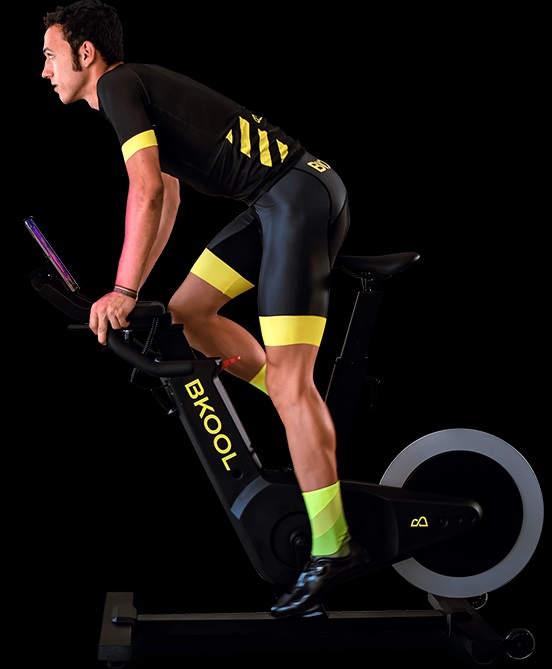
How to Train with Rollers and Racing Bike in JUNE 2025: Complete Training Schedule and Plan
announcements offers promotions racing bike mtb gravel ebike JUNE 2025 prices best discounts
GranFondo GF ROAD Calendar JUNE 2025 complete list of dates
GranFondo MTB Calendar JUNE 2025 complete list of dates
Nutrition for Cyclists: The Correct Diet to Follow in JUNE 2025
E-Bike Maintenance JUNE 2025 - EVERYTHING YOU NEED TO KNOW TIPS AND SECRETS
MTB Mountain Bike Maintenance JUNE 2025 - EVERYTHING YOU NEED TO KNOW TIPS AND SECRETS
Road Bike Maintenance JUNE 2025 - EVERYTHING YOU NEED TO KNOW TIPS AND SECRETS
How to Train with MTB Mountain Bike in JUNE 2025: Complete Training Schedule and Plan
How to Train with Rollers and Racing Bike in JUNE 2025: Complete Training Schedule and Plan
How to Train with a Road Bike in JUNE 2025: Complete Training Schedule and Plan
How to Train with Rollers and Road Bike in JUNE 2025: Complete Training Schedule and Plan
Indoor Training Schedules for Road Cycling in June 2025: Structure and Detailed Programming with Rollers
The month of June, while often offering favorable weather conditions for road training, can present days with adverse conditions or time limitations that make the use of rollers an efficient and controllable alternative to maintain and improve the specific physical condition for road cycling. This article presents a complete training schedule model for the month of June 2025, specifically adapted to the use of rollers, structured on a weekly basis and focused on the development of different physiological capacities relevant to performance.
The following table and the subsequent detailed description constitute an example of programming that can be adapted to the individual needs, level of athletic preparation and specific objectives of the cyclist. A prior evaluation of the current physical condition and a possible consultation with qualified athletic trainers to personalize the indoor training plan are recommended. It is essential to ensure adequate ventilation and proper hydration during roller sessions.
General Structure of Indoor Programming:
Indoor roller programming maintains a similar weekly structure to road training, but with specific adaptations for the controlled environment. Session duration is generally shorter, but intensity can be precisely modulated. Intensity is expressed in terms of maximum heart rate (HRmax) and/or Functional Threshold Lactate (FTP), with indications of pedaling cadence (rpm). The use of virtual training platforms (e.g. Zwift, TrainerRoad) can enrich the experience and provide detailed training data.
Detailed Training Schedule and Chart on Rollers:
Week 1:
Monday: Active Unloading (Rollers). 45-60 minutes at low intensity (HR ≤ 65% HRmax), high cadence (≥ 90 rpm). Focus on pedaling fluidity.
Tuesday: Interval Training - Anaerobic Threshold (Rollers). 50-65 minutes total, including 3-4 8-minute reps at Anaerobic Threshold (FTP or approximately 85-95% HRmax) with 4 minutes of low-intensity recovery between reps. Maintain cadence between 85-95 rpm.
Wednesday: Medium Run (Rollers). 60-90 minutes at moderate intensity (HR 70-80% HRmax), steady and regular pace. Insert short periods (30 seconds) with increased cadence.
Thursday: Rest. Passive recovery.
Friday: Endurance Strength (Rollers). 50-65 minutes total, including low-cadence (50-60 rpm) reps at moderate intensity (HR 75-85% HRmax) for 4-7 minutes, alternating with agile recovery. Perform 4-6 reps.
Saturday: Simulated Long Run (Rollers). 90-120 minutes at low-medium intensity (HR 65-75% HRmax), maintaining a constant pedaling speed. Use virtual platforms to simulate longer routes if necessary.
Sunday: Active Unload (Rollers) or Rest. 45 minutes at low intensity and high cadence or complete rest.
Week 2:
Monday: Active Unload (Rollers). 45 minutes at low intensity (HR ≤ 65% HRmax), high cadence (≥ 90 rpm).
Tuesday: Interval Training - VO2max (Rollers). 50-60 minutes total, including 6-8 2-minute high intensity intervals (VO2max or approximately 95-105% HRmax) with 2-minute recovery at low intensity between intervals. Cadence maintained between 90-100 rpm.
Wednesday: Medium Endurance with Pace Variations (Rollers). 60-90 minutes at moderate intensity (HR 70-80% HRmax), inserting blocks of 4-8 minutes at slightly higher intensity (HR 80-85% HRmax) every 15-20 minutes.
Thursday: Rest. Passive recovery.
Friday: Agility and Cadence (Rollers). 50 minutes at low-moderate intensity (HR 65-75% HRmax) focusing on a high cadence (≥ 95 rpm) and smooth pedaling. Insert short sprints (10-15 seconds) with full recovery.
Saturday: Simulated Long Distance (Rollers). 105-135 minutes at low-medium intensity (HR 65-75% HRmax), maintaining a steady and regular pedaling.
Sunday: Recreational Road Ride (if possible) or Active Unload (Rollers). 60-90 minutes at variable intensity on the road or 45 minutes at low intensity on the rollers.
Week 3:
Monday: Active Unloading (Rollers). 30-45 minutes at low intensity (HR ≤ 65% HRmax), high cadence (≥ 90 rpm).
Tuesday: Interval Training - Extended Anaerobic Threshold (Rollers). 60-75 minutes total, including 2-3 12-18 minute repeats at Anaerobic Threshold (FTP or approximately 85-95% HRmax) with 6 minutes of low intensity recovery between repeats. Cadence maintained between 85-95 rpm.
Wednesday: Medium Endurance with Specific Strength Work (Rollers). 60-80 minutes at moderate intensity (HR 70-80% HRmax), including periods of low cadence (70-80 rpm) maintaining a constant power.
Thursday: Rest. Passive recovery.
Friday: Sprint and Power (Rollers). 50 minutes total, including maximal sprint repeats (8-12 seconds) with full recovery (3-5 minutes) between repeats. Perform 6-8 repeats.
Saturday: Simulated Long Run (Rollers). 120-150 minutes at low-medium intensity (HR 65-75% HRmax), simulating pace variations if possible.
Sunday: Active Unload (Rollers). 45-60 minutes at low intensity and high cadence.
Week 4:
Monday: Active Unload (Rollers). 30-45 minutes at low intensity (HR ≤ 65% HRmax), high cadence (≥ 90 rpm).
Tuesday: Intensity Recall - Anaerobic Threshold (Rollers). 40-50 minutes total, including 2-3 6-minute reps at Anaerobic Threshold (FTP or approximately 85-95% HRmax) with 3-minute recovery at low intensity.
Wednesday: Medium Regenerative Run (Rollers). 50-70 minutes at low-moderate intensity (HR 65-75% HRmax), easy pace and focused on active recovery.
Thursday: Rest. Passive recovery.
Friday: Short Stretches and Agility (Rollers). 40-50 minutes at low intensity (HR ≤ 70% HRmax) with the inclusion of short sprints (10-15 seconds) and periods of high cadence pedaling.
Saturday: Road Ride (if possible) or Simulated Medium-High Run (Rollers). Variable duration and intensity on the road or 75-105 minutes at HR 75-85% HRmax on the rollers.
Sunday: Rest or Very Light Active Unload (Rollers). 30 minutes at very low intensity.
Specific Adaptations for Indoor Roller Training:
Ventilation: Ensure adequate airflow for thermoregulation. The use of fans is highly recommended.
Hydration: Sweating is often more intense on rollers, so it is crucial to hydrate regularly during and after training.
Position Variation: Change your position on the saddle frequently to avoid soreness and excessive fatigue at specific contact points.
Mental Engagement: Training on rollers can be mentally challenging. The use of virtual platforms, music or videos can help to maintain motivation.
Climb and Resistance Simulation: Many modern rollers allow you to vary the resistance to simulate hills or headwinds. Use these features to make your training more specific.
Rest and Recovery: Rest between intervals in high intensity training is essential to allow for partial recovery and maintain the quality of the effort.
Additional Considerations (Also Valid for Road Training):
Heart Rate: Referencing heart rate requires knowledge of your HRmax and specific training zones. The use of a heart rate monitor is recommended.
Power: Training based on power (watts) provides a more accurate measurement of the intensity of the effort and can complement or replace training based on heart rate. Smart trainers often provide power data.
Perceived Exertion (RPE): The RPE scale (from 1 to 10) can be used to monitor perceived intensity.
Nutrition and Hydration: A proper nutritional and hydration strategy is essential.
Rest: Rest is an essential component of training.
Adaptation: This sheet is an example. You need to listen to your body and adapt your program.
Variation: Introduce variations in roller training protocols to challenge the body in different ways.
Integrating roller training sessions into a broader road cycling program in June 2025 can be an effective tool to optimize time and maintain training continuity, even in the presence of external limitations. The key to effective indoor training lies in precise intensity control and the ability to make sessions challenging and goal-oriented. It is recommended to customize this sheet and consider using virtual platforms for a more engaging and data-rich training experience.
